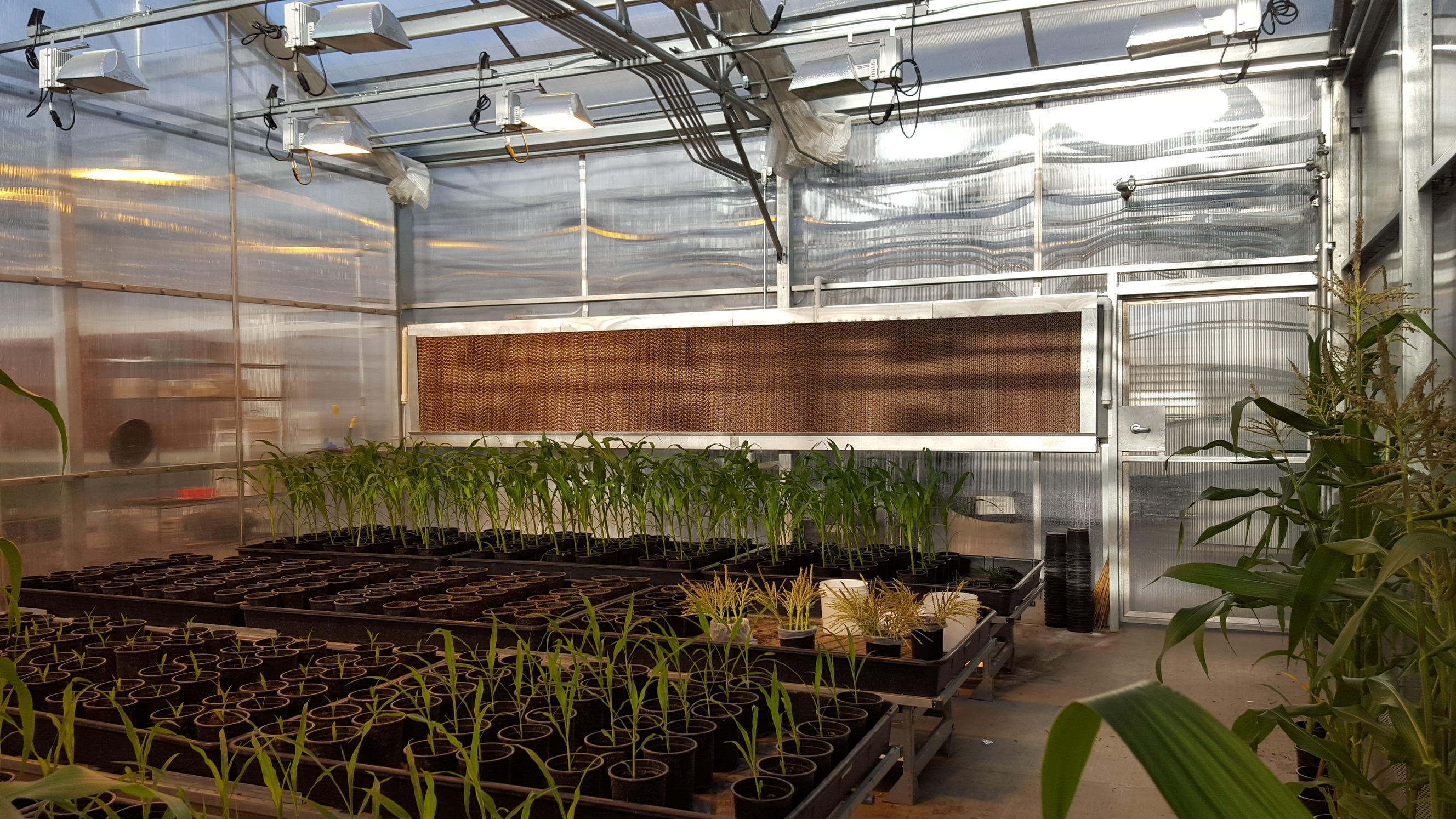
Find out what to use to keep your greenhouse ventilated and cool in the hot, humid summer.
On a bright, sunny summer day, a 30- x 100-foot greenhouse will gather about 32 million British Thermal Units (BTUs’) of heat. This is equivalent to burning 32 gallons of fuel oil or 320 Therms of natural gas. If the greenhouse is full of plants, about one-half of this heat is used for transpiration and evaporation. The remainder of the cooling has to be conducted through ventilation. If the greenhouse is empty and closed, the temperature can exceed 150° F.
Shade on the outside of the greenhouse will keep some of the heat out. Shade on the inside, if it contains aluminum foil, will reflect some of the heat back out. Ventilation, either natural or fan, will remove a considerable amount of the heat that is collected. Still, on summer days, the temperature may exceed the desired level that promotes good plant growth by 10-20º F. Excessive temperature results in delayed flowering and internode stretching. Evaporative cooling may be the best choice under these conditions.
Evaporative cooling, which uses the heat in the air to evaporate water from leaves and other wetted surfaces, can cool the greenhouse to 10-20° F below outside temperature. It takes one Btu of heat to raise the temperature of one pound of water 1° F, but it takes 1,060 BTUs’ of heat to change the same amount of water to a vapor.
With an evaporated cooling system, humid air containing the heat that it picked up within the greenhouse is exhausted out through the vents or fans, and cooler, drier air is brought in. Evaporative cooling works best when the humidity of the outside air is low. For example, inReno,Nev., the average summer dry bulb temperature is 96º F and the wet bulb is 61º F. With an evaporative cooler having an efficiency of 80 percent, the temperature would be cooled to about 68° F. These conditions are most common in the dry Southwest, but even in the more humid sections of theUnited States, significant evaporative cooling can occur most days in the summer. In humidNew Orleans, where the average summer dry bulb temperature is 93° F and the wet bulb is 78° F, the cooled air would be about 81° F, acceptable for the production of most plants. Figure 1, right shows a comparison of air temperature leaving the evaporative cooling system at different levels of relative humidity outside the system when the inside temperature is 90° F.
Several evaporative cooling systems work well in commercial greenhouses. The most common is the fan and pad system. It contains a cellulose pad, overhead water supply pipe, gutter to collect excess water, a sump tank, pump, piping and control.
The 4- or 6-inch-thick pad is treated with anti-rot salts and stiffening and wetting agents. Pads are normally installed continuously along the side or end of the wall opposite the fans. The amount of pad area needed is calculated by multiplying the floor area by 8 feet and dividing by 250 for a 4-inch pad or 400 for a 6-inch pad. For example, a 30- x 100-foot greenhouse with a 4-inch pad would require 96 sq. ft. of pads (30 x 100 x 8 ÷ 250 = 96 sq. ft.)
The overhead water supply pipe should distribute the water so the pad is wet uniformly. The minimum water flow rate is 0.5 gpm per sq. ft. for a 4-inch pad and 0.8 gpm per sq. ft. for a 6-inch pad.
Excess water is collected below the pad in a gutter and piped to a sump tank. Tank capacity needs to be 0.8 gallon per sq. ft. of pad for 4-inch pads and 1.0 gallon per sq. ft. for 6-inch pads. Water returning to the sump should be filtered to remove any debris. A make-up water supply and float valve keep the water level constant. In areas having water with a high mineral content, it is advisable to bleed 3-5 percent of the water to minimize salt buildup. Algae growth in the re-circulated water can be controlled with a biocide.
Modular pad systems of 5 and 6 feet are now available. These are self-contained and come completely assembled and ready to bolt to the wall. Installation time is reduced considerably. Only water and electrical connections have to be attached.
Next month, find out about swamp coolers, mist and fog systems and fan-generated fog and how they can work for you.
By John W. Bartok, Jr.
Published on:
04/23/2012
Post by:
Admin
Category:
Controlled Environment Greenhouse
Greenhouses
Tag(s):
#Commercial greenhouses
#Cooling system
#Evaporative Cooling
#Greenhouse
#John W. Bartok
Our relationship with ATI goes back a ways,” Danny said. “We started with John Pound back in the early eighties and it was the first greenhouse we purchased. We have approximately 170,000 sq. ft. at both sites from Coldframes to gutter-connected houses."
"Our main facility is made up of Agra Tech greenhouses. We started with bare land in 1999 and they helped to make our vision a reality!" says Lisa Takao-McCall
Read article: Takao Nursery
Takao Nursery
Danny & Lisa Takao
Fresno, CA